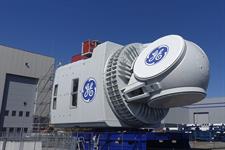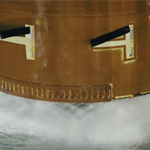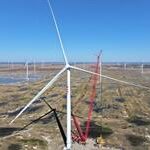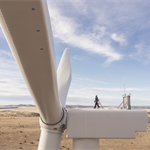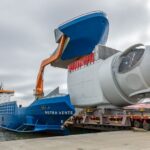GE Renewable Energy to trial ‘gamechanging’ 3D printing for offshore wind turbine nacelles
Energy Disrupter
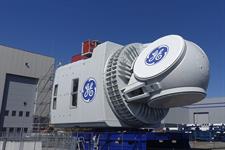
GE Renewable Energy will work with research partners to develop the world’s largest 3D printer for offshore wind applications, as it hopes to streamline production of key components for its Haliade-X turbines.
It will work with German research body Fraunhofer Institute for Casting, Composite and Processing Technology (Fraunhofer IGCV) and German additive manufacturing technology firm Voxeljet on the 3D printer.
The partners believe the planned advance casting cell 3D printer will be capable of printing moulds to cast components for the Haliade-X offshore wind turbine’s nacelles.
This will help to reduce the time it takes to make the mould from ten weeks or more to just two weeks, and also lower the carbon footprint by eliminating the need to transport large parts from a central manufacturing location, the partners explained.
They expect to launch the project on the third quarter of 2021, with initial printer trials starting in the first quarter of next year.
Development work for the printer is taking place in Germany, France and the US. In the future, the 3D printers will be installed as close as possible to the offshore wind farm to minimise transportation costs and the project’s carbon footprint, a GE spokeswoman explained.
Juan Pablo Cilia, senior additive design engineer at GE Renewable Energy, said: “This unprecedented production technology will be a gamechanger for production efficiency allowing localised manufacturing in high-cost countries, a key benefit for our customers looking to maximise the local economic development benefits of offshore wind.”
Voxeljet CEO Ingo Ederer suggested that onsite 3D printing could help manufacturers meet tight project schedules and escalating market demand.
Printing process
The 3D printer will be based on Voxeljet’s binder-jetting technology, which can be used to print moulds for castings up to 9.5 metres in diameter and weighing more than 60 tonnes. Binder-jetting is a process similar to that used in an inkjet printer and uses selective application of binding fluids to bond powdered materials in layers, Voxeljet explained.
The printer will be designed to be capable of producing sand moulds for casting metal parts of different shapes and sizes to make up a turbine nacelle.
A GE spokeswoman said the company could not reveal what nacelle components the partners would aim produce moulds for due to intellectual property restrictions.
Fraunhofer IGCV will monitor thermal management during casting and will evaluate the ideal proportions of the printing materials as part of the new research project.
The German ministry for economic affairs and energy is due to provide €2 million for the project.The research parners would not disclose whether the project will require further funding.
GE Renewable Energy has previously championed 3D printing as a disruptive technology that could change the way turbines could be produced. It has already committed to research projects to use additive manufacturing for other turbine components, including towers and blades.




